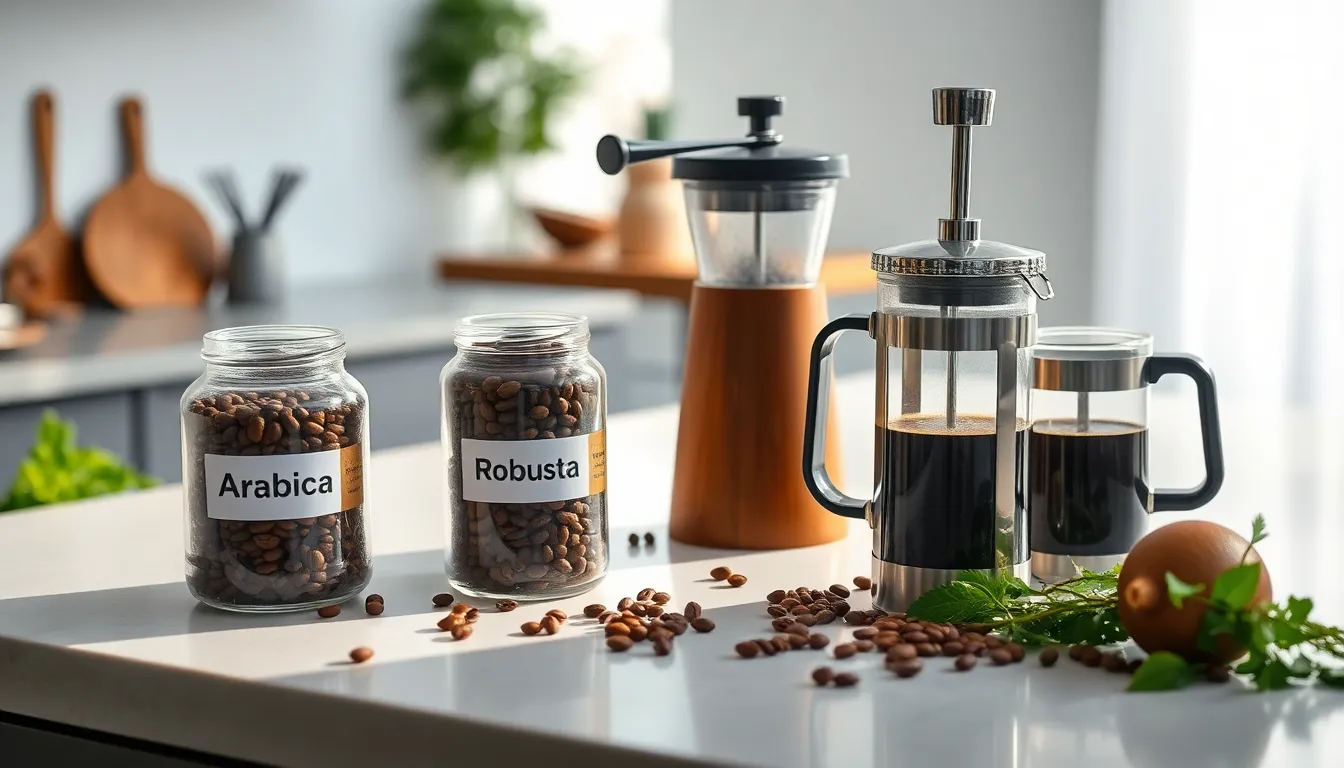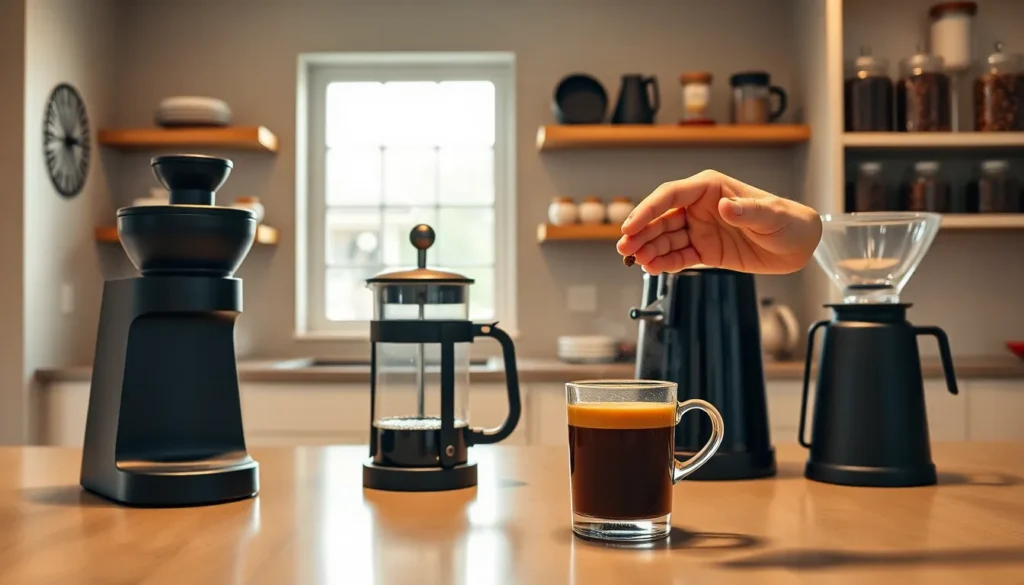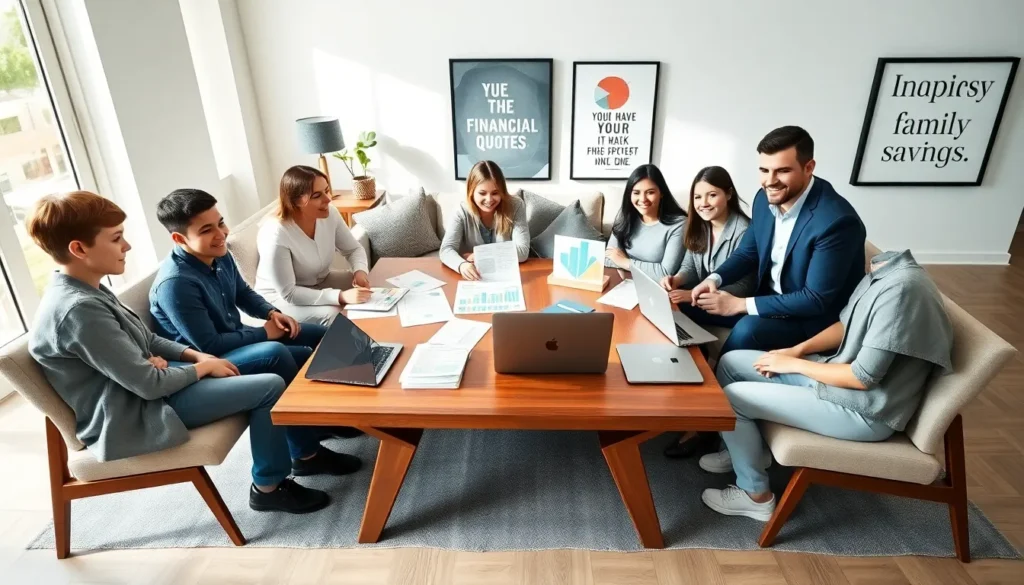Table of Contents
ToggleLet’s face it, coffee is not just a drink: it’s a ritual, a warm hug in a mug, and for many, the only reason to follow the sun up. Making coffee at home can feel daunting, especially when the world is full of artisanal cafes brewing liquid gold. But fear not. With the right approach and a dash of humor, anyone can create café-quality coffee without leaving the comfort of their kitchen. Grab your favorite mug and let’s jump into the aromatic world of brewing the best coffee at home.
Understanding Coffee Beans

Coffee is like the fine wine of beverages, and understanding the beans is the first step toward a perfect brew.
Types Of Coffee Beans
There are four main types of coffee beans, but in the realm of home brewing, two reign supreme: Arabica and Robusta. Arabica beans, known for their sweet, nuanced flavors, tend to be the go-to choice. On the other hand, Robusta offers a more bitter profile with a higher caffeine punch, making it ideal for espresso. So, if you’re seeking balance, stick to Arabica. Want a caffeine kick? Consider Robusta.
Single Origin Vs. Blends
Next, you encounter single origin and blends. Single origin coffee hails from one location, embodying the unique characteristics of its terroir, a fancy way of saying ‘where it’s from.’ Blends, conversely, are crafted from beans of varying origins, offering a blend of flavors (hence the name). Both styles have benefits, so explore them based on your taste preference.
Choosing Quality Coffee Beans
When it comes to coffee, freshness matters as much as your morning alarm.
Importance Of Freshness
Coffee beans start losing their flavor the moment they’re ground. So, buy whole beans rather than pre-ground coffee. Look for beans roasted within the last two weeks for peak flavor. Check the packaging for a roast date, and remember: fresh is best.
Storage Tips For Coffee Beans
To keep your coffee beans fresh longer, store them properly. Light, heat, and moisture are enemies of quality coffee.
Use an airtight container and keep your stash in a cool, dark place, your average kitchen cabinet works wonders. Avoid the fridge: it’s too humid. Beans deserve a warm, cozy home, just like you.
Essential Brewing Equipment
Great coffee begins with the right equipment. Luckily, you don’t need a science lab to brew coffee.
Coffee Makers Overview
There’s a vast range of coffee makers: drip machines, espresso machines, French presses, and pour-over setups. Each has its unique flair: your choice will depend on how much effort you want to put in and how much coffee you drink daily.
Manual Brewing Methods
If you’re feeling adventurous, manual methods like pour-over or French press can bring out unique flavors. They allow for better control over the brewing process, and yes, they make you look like a coffee connoisseur.
Coffee Grind Size And Its Impact
Grind size is a game-changer in coffee brewing.
Matching Grind Size To Brewing Method
Coarse grinds work best for methods like French presses, while fine grinds are perfect for espresso machines. If your coffee tastes bitter, you might be over-extracting it from too fine a grind. If it’s weak, try a finer grind to unleash those flavor notes.
Tips For Grinding Coffee Beans
Grinding coffee beans is an art.
To achieve the best results, aim for consistency in grind size. Invest in a burr grinder for precision: blade grinders tend to act like the villain in our coffee story by producing uneven grinds. Experiment and find your sweet spot.
Brewing Techniques For Perfect Coffee
Brewing coffee is both a science and an art.
Water Quality And Temperature
Use filtered water if possible: impurities can ruin your cup. Aim for water temperature around 195°F to 205°F for optimal extraction. If you boil your water, let it sit for 30 seconds before pouring.
Brewing Time And Ratios
Brewing time varies based on your method but usually ranges from 2 to 5 minutes. A good starting ratio is 1:15 coffee to water. Adjust to your taste preferences, and don’t forget to experiment.
Exploring Different Coffee Recipes
Now that you have the basics down, why not be a little adventurous?
Classic Brewed Coffee Recipes
A simple pour-over or a strong French press can never go wrong. These classic methods focus on the coffee’s innate qualities, letting you enjoy the nuances of your brew.
Specialty Coffee Drinks
Want to jazz it up? Try whipped coffee or even a homemade latte. Just froth some milk and pour it over your brewed coffee for some coffee shop vibes at home. Flavoring syrups can add flair, caramel, vanilla, you name it.
Enhancing Flavor With Additives
Why let good coffee stop you from enjoying great coffee?
Milk Alternatives And Creamers
Explore options like oat milk, almond milk, or even coconut cream. They each bring their unique flavor profile, letting you curate your ideal cup.
Spices And Flavorings
Jazz up your coffee with spices like cinnamon or nutmeg. A pinch can transform your beverage into something exceptional.
Cleaning And Maintenance Of Equipment
The secret to great coffee often lies in clean equipment.
Regular Cleaning Routine
Make it a habit to clean your coffee maker regularly. Old coffee oils can rancidify, ruining your next brew. A simple rinse and maintenance will go a long way in keeping your coffee pristine.
Descaling Your Coffee Maker
To keep your coffee maker in tip-top shape, descaling is a must.
Use a mixture of equal parts water and white vinegar. Run this solution through your machine, and voila. A fresh and functional coffee maker, ready to serve your next cup.




